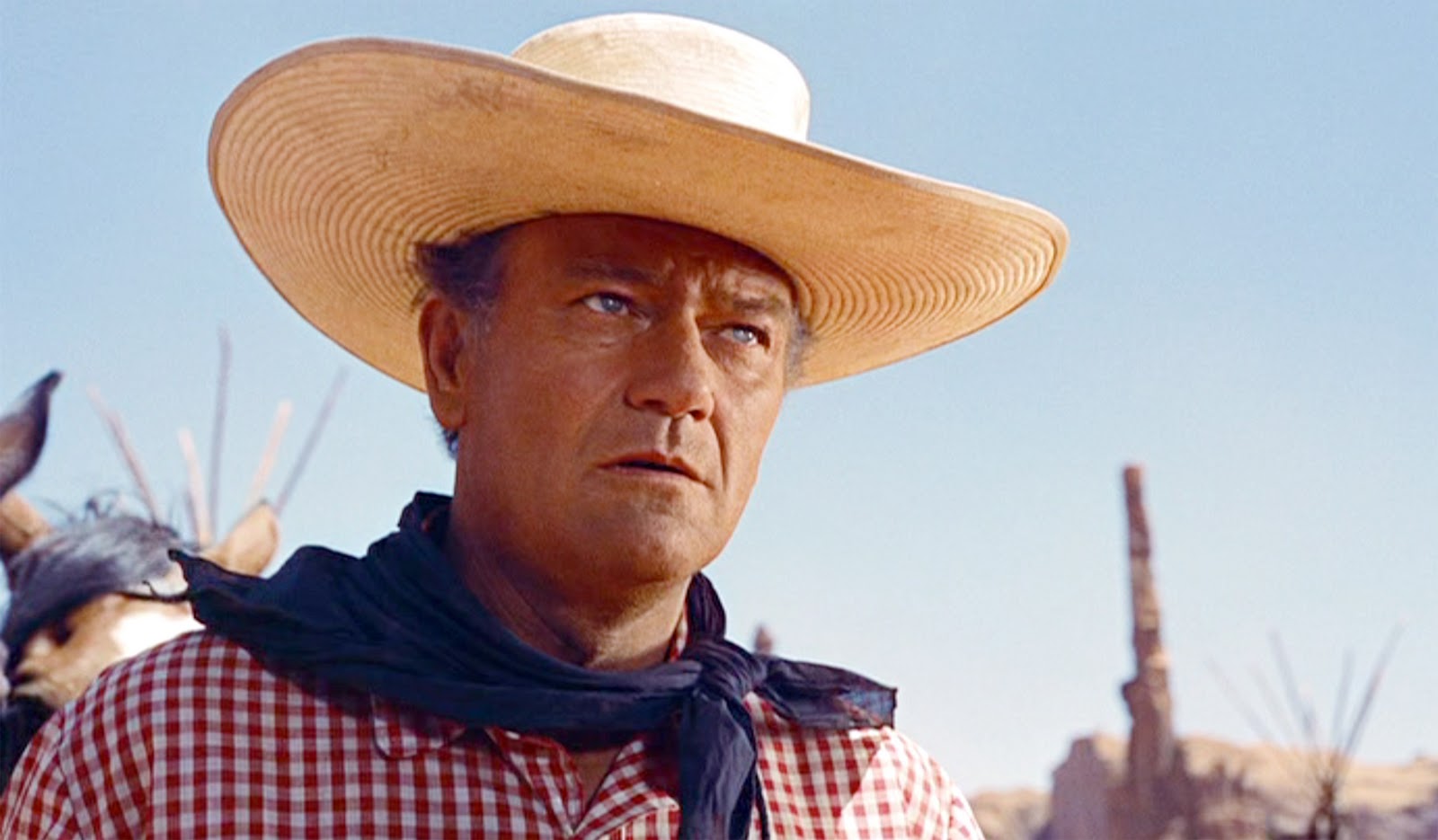
After providing John Wayne with his breakout role in the film Stagecoach, John Ford and John Wayne would go on to make a long series of films together, each one of them ranking well at the box office and in the hearts of millions who continue to enjoy these cinematic masterpieces today. A master at location shoots, and considered a true artist with his ability to frame a character against the backdrop of an unforgiving terrain, John Ford already had a reputation in Hollywood as one of the best directors of all time when he took on John Wayne as a protégé. Wayne’s skills as an actor, with a large imposing figure, dramatic timing, and commanding on screen presence were perfect for the larger than life storylines the men were telling.
Running the gambit from classic western to inspiring war movie, not all of the Ford/Wayne collaborations will make the audience cheer for the winner, but they all help define what it means to be an American Hero. In celebration of the legacy of films created by John Ford and starring John Wayne, here are 12 of the most iconic films from the classic film partnership ranked from worst to best.
12. They Were Expendable (1945)
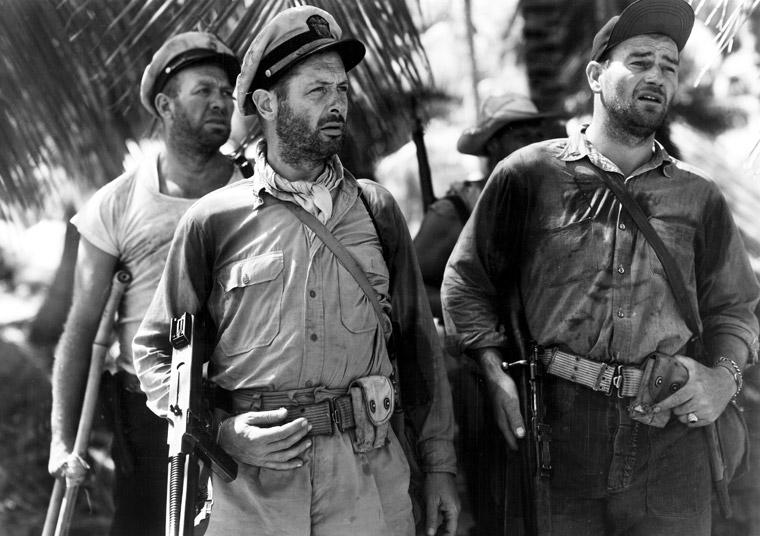
Based on a real life battle during World War II, this film tells the story of a PT boat that faces the Japanese during an invasion. The group are assigned an impossible task and the film follows their attempt to complete their doomed mission. During the making of this film, the notoriously hard John Ford relentlessly assaulted John Wayne with verbal attacks on his character for not having served in the armed forces.
To mimic the South Pacific environment, the film was shot in Florida with the full support of the US Navy Department, who temporarily remarked several aircraft from air stations in Miami, Fort Lauderdale, and Key West, to create the Japanese aircraft in the film. Several of the cast and crew who were themselves veterans of the navy are credited on screen with their naval rank and title.
11. 3 Godfathers (1948)
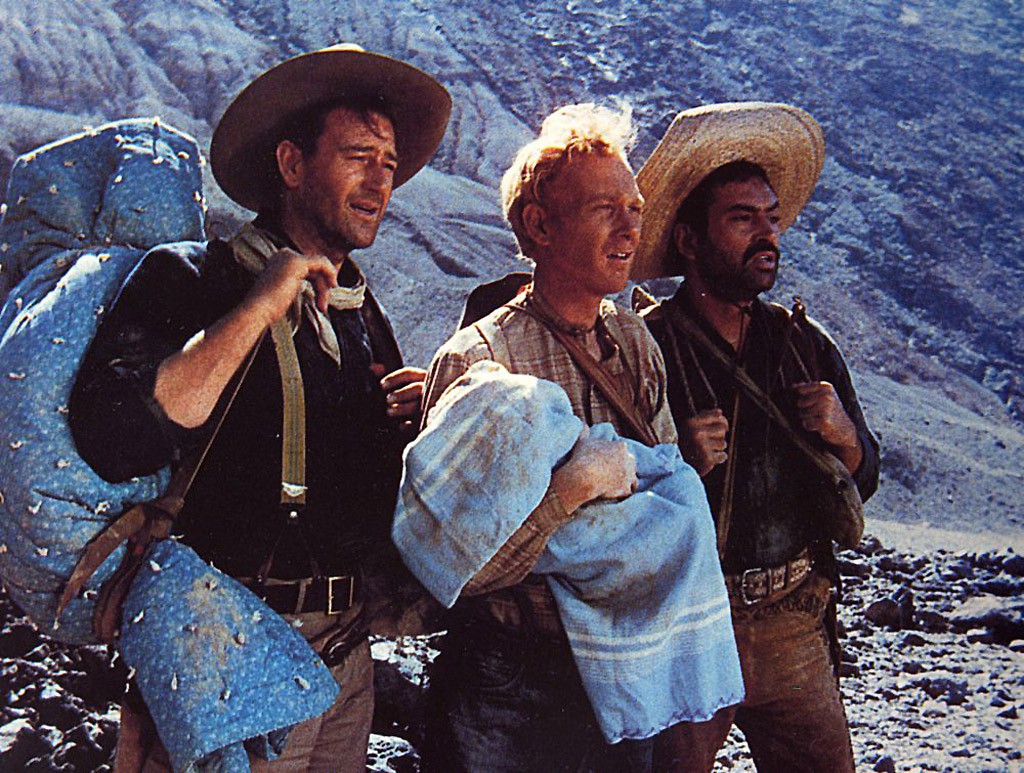
Telling the story of the three wise men searching for baby Jesus through the lens of three cowboys ambling through the desert with a baby, this film has become a Christmas classic for John Wayne fans. Agreeing to a promise made to a dying woman, and inspired by a Bible verse, the three men traverse the desert to find New Jerusalem, taking turns feeding and caring for the baby along the way. The men are brought aid by a donkey and her colt, and discover salvation through redemption as a result of their relationship with the baby, all elements designs to emulate the biblical Christmas story.
Featuring (as you may expect) beautiful desert long shots and artistic drama, this film was shot as a tribute to Harry Carey, Sr, who was a long time friend of John Ford that died in 1947, just one year before this film was made. Carey’s son, Harry Carey, Jr, stars in this film, appearing in the opening credits as “Introducing Harry Carey, Jr.” The film is a tribute to Carey, Sr, because he had starred in an earlier film version of The Three Godfathers, made in 1916.
10. The Wings of Eagles (1957)
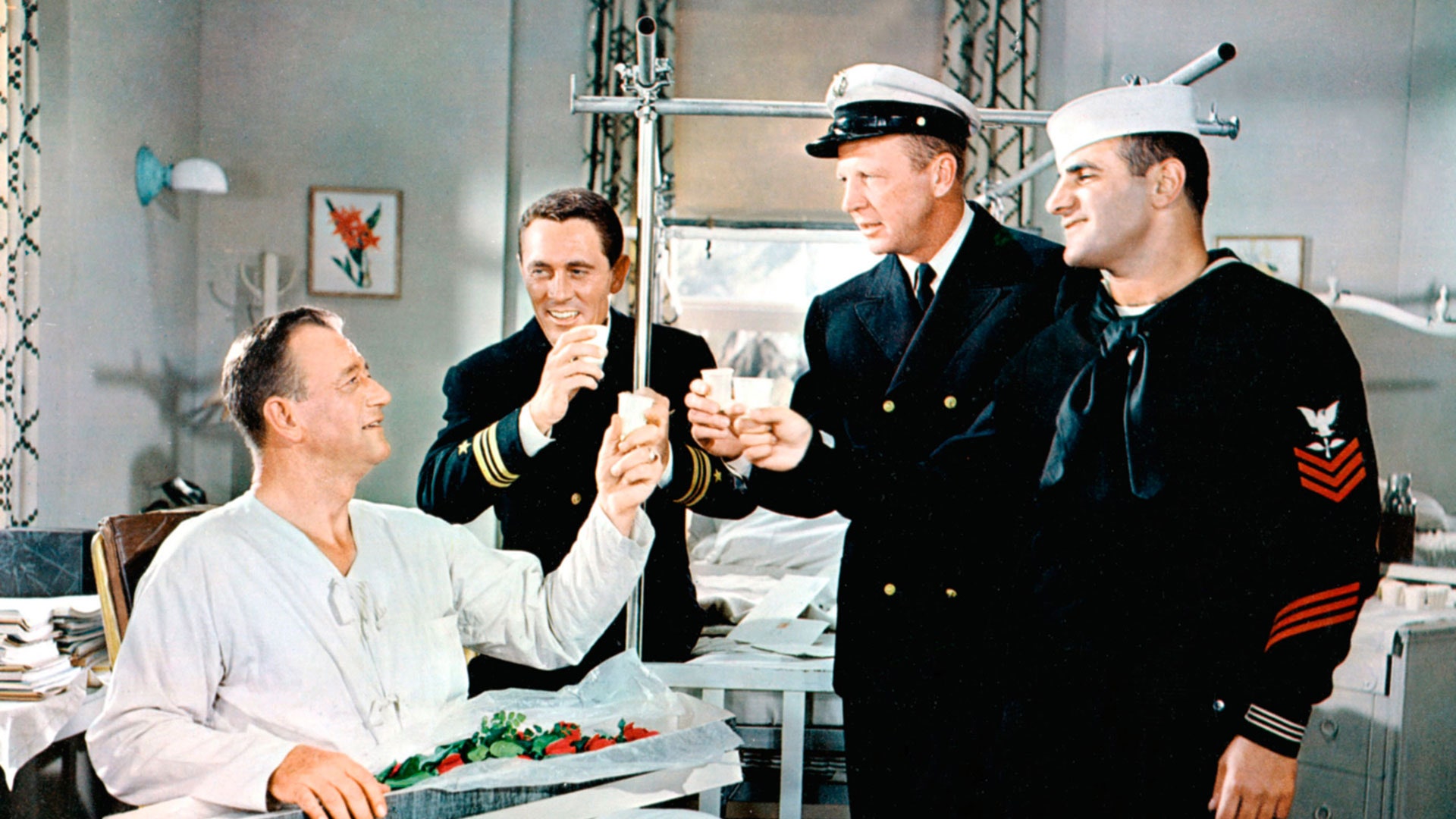
Telling the real history of the US Naval aviation, this film was made as a tribute to Frank “Spig” Wead, who died in 1947 after writing “We Plaster the Japs” for The American Magazine in 1944. The main character is a naval aviator who has trouble committing at home. The performance leads the audience to believing some foundation for the negligence is from the stress of the job and that Wead is personally conflicted about his role as a father. After Wead is injured in a tragic accident at home, Wead shuts completely down and isolates himself emotionally from the entire family. We see friends of Wead gather around him to try and get him over his injuries, both physically and emotionally.
In the film, the real life friendship of Wead with Director John Ford is shown in the film, with Ward Bond playing the character of John Dodge, who represents John Ford. The chemistry between O’Hara and Wayne in this film is as solid as any of their films together, but this one has a more mature tone.
9. How the West Was Won (1962)
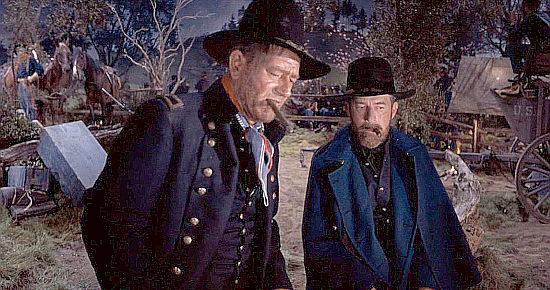
This 1962 epic American western is narrated by Spencer Tracy, and features sweeping aerials of the Rocky Mountains. This film was only partially directed by John Ford, as the entire film is a piecework quilt of short sections knitted together by different directors. John Ford directs the portion of the film where the main character goes through the Civil War. In total, there are three directors that worked on this film.
The overarching story of the film follows the development of the American West through the eyes of Linus Rawlings, a mountain man who walks from the Rockies through to the famous outlaws of the quintessential western town. Told in a series of short tales woven together, we see wagon trains making their way across the Plains being attacked by Indians, along with escapes by riverboat to find life in a budding river town. The Civil War breaks out when we get to 1861, and we follow Linus as he joins up with the Union army, with appearances by Ulysses S. Grant and William Tecumseh Sherman.
Featuring beautiful footage of the railroads, as well as the enormous cactus of the wild west, the film tells the story of a dying age, that of the classic American West. The film features an epilogue that showcases modern features of the American West, including the Hoover Dam, and the Golden Gate Bridge.
8. Donovan’s Reef (1963)
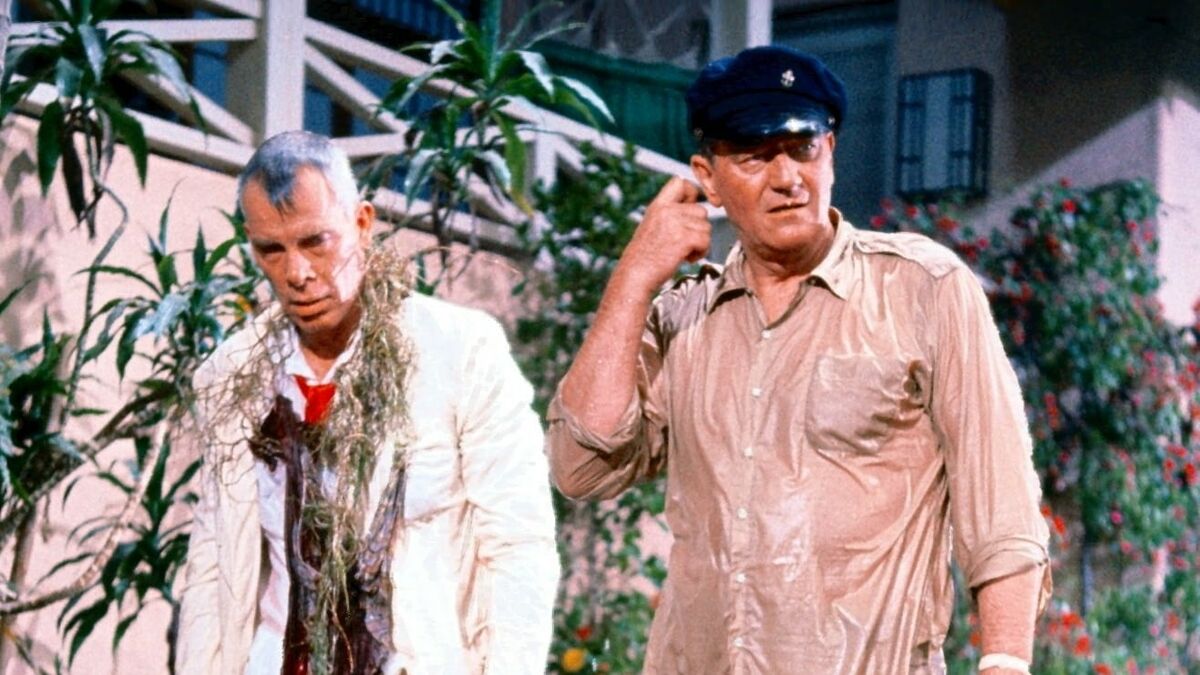
This film is an adventure comedy featuring what is possibly the best John Wayne fist fights on film. Following Michael Donavan, who ends up playing out a family rouse for a friend who gets in a jam. Set just a few weeks before Christmas, this film also makes the rounds as a Christmas movie for Wayne fans. James Michener prepared the story for Paramount (author of over 40 books including Tales of the South Pacific which was the Pulitzer Prize winner in 1948).
The film is based on a script called South Sea Story by James Edward Grant. The film was set in French Polynesia, invents both precise location as well as local custom for comedic effect, and was actually filmed in Hawaii. One of the houses in the film actually belonged to the Queen of Hawaii.
7. Rio Grande (1950)
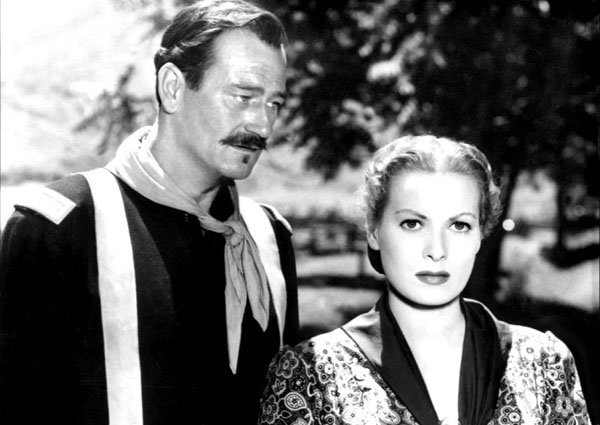
Filmed as a compromise between John Ford, John Wayne, and Maureen O’Hara who wanted to make the film, The Quiet Man, this film proves that Republic at least had it right that they did indeed have a winning combination in these three. Considered the third installment of “Ford’s cavalry trilogy,” this film is a sequel to Fort Apache and sees Kirby York promoted to the rank of Lieutenant Colonel. Again posted out west to defend against marauding Apaches, the film follows the story of what happens when Yorke’s underage son who shows up with a group of new recruits added to the regiment and his mother chases him down to bring him home.
While today, The Quiet Man is remembered as a classic Wayne film, at the time these films were released, Rio Grande vastly outperformed the Irish romantic comedy, earning close to $4 million in it’s first year. This film is one of three that Ford made pairing O’Hara and Wayne, and was the unofficial and un-credited film debut of John Wayne’s second son, Patrick Wayne, who appears in the film at just 11 years old. This film contains folk songs by the Sons of the Pioneers, one of America’s earliest western singing groups.